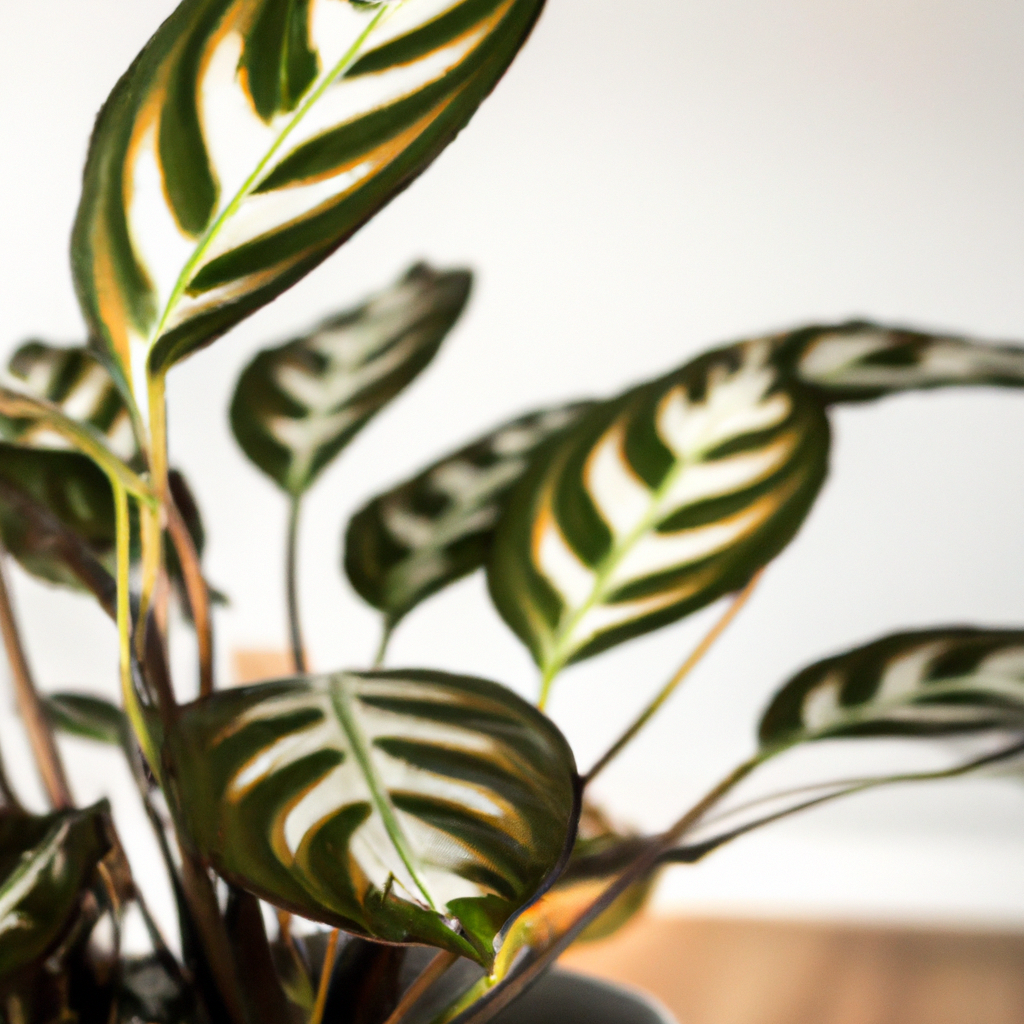When it comes to houseplants, the Prayer Plant is known for its unique beauty and elegance. Its distinctive foliage and colorful leaves make it an attractive addition to any home. As such, it’s no surprise that the Prayer Plant is a popular choice for those looking to bring a touch of nature into their space. But, like any houseplant, the Prayer Plant requires proper care and attention in order to thrive.
To ensure that your Prayer Plant stays healthy and happy, it helps to know what you’re doing. Here are some key points to keep in mind.
Understand Light Requirements
The Prayer Plant enjoys bright, indirect light and thrives in locations that have some light throughout the day. While it can handle some direct sun exposure, avoid intense, direct sunlight as it may scorch the leaves. Also, try to keep temperatures above 60 degrees Fahrenheit.
Moisture Matters
The soil should be kept slightly moist but not saturated. Too much water will cause the leaves to yellow and drop off. On the other hand, drought-like conditions can cause the plant to become dry and brittle. An easy way to gauge when to water is to stick your finger a couple inches into the soil – if it feels dry, it’s time to give your Prayer Plant a drink!
Fertilizing for Health
To give your Prayer Plant the nutrition it needs, you can use a balanced houseplant fertilizer. Just make sure to follow the directions on the label and only fertilize once a month or so. Be careful not to add too much fertilizer because it can burn the leaves.
Dealing with Insects
Unfortunately, pests such as mealybugs and spider mites can infest your Prayer Plant if not monitored and managed properly. To remove these pests, wash off the plant with warm soapy water and use insecticidal soap if needed. Additionally, you can use neem oil or insecticidal oils to kill the pests. Finally, avoid using harsh chemical pesticides as these can be harmful to the plant.
Humidity Control
As a tropical plant, the Prayer Plant is especially sensitive to low levels of humidity in the air. To maintain the proper level of humidity for your Prayer Plant, use a humidifier or place a tray of water near the plant. Also, misting with a spray bottle will give your Prayer Plant an extra boost of moisture.
Propagation
If you’d like to create new Prayer Plants, you can propagate them by taking cuttings or dividing them. To take a cutting, use sharp, clean scissors and make sure each cutting has at least two sets of leaves. Then, place the cuttings in moist potting mix and they will soon begin to root and grow. You can also propagate your Prayer Plant by dividing it into several smaller plants. Start by gently pulling apart the roots and then replant each piece into its own pot.
Repotting
As your Prayer Plant grows, eventually it will need to be repotted into a container that’s two or three inches larger than its current pot. Before repotting, make sure to carefully loosen any roots that are starting to wrap around the bottom of the pot. This will allow new growth and provide better drainage for the plant.
Introducing a “Dumb Cane” for Natural Pest Control
If you’re looking for a natural way to keep pests away from your Prayer Plant, consider investing in a “Dumb Cane.” This species of plant is known for its toxin-producing sap which deters many common houseplant pests like mealybugs and spider mites. Additionally, Dumb Cane has attractive foliage that adds texture and color to any home environment.
For more information on how to properly care for your new Dumb Cane houseplant check out this helpful guide.
Conclusion
Caring for a Prayer Plant doesn’t have to be difficult. Just keep in mind these key points—light, moisture, fertilizing, pests, humidity and repotting—and your Prayer Plant will thrive! Consider
